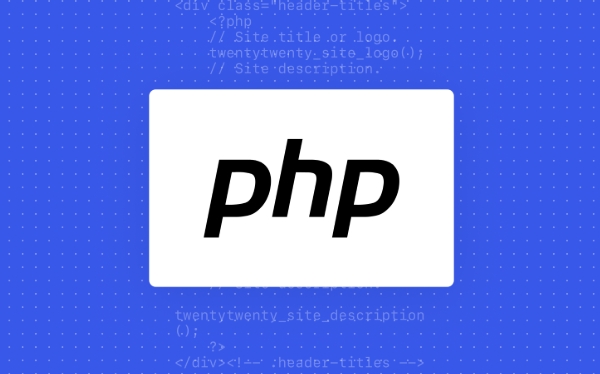The steps to install and configure Apache and PHP are as follows: 1. Install Apache and PHP and related modules through the package manager; 2. Create a test file to verify whether PHP is operating normally; 3. Check and enable the mod_php module, and adjust the MIME type configuration if necessary; 4. Modify the settings in php.ini (such as upload size, memory limit, etc.) according to requirements and restart the service; 5. Pay attention to file permissions, extensions and virtual host configuration. After completing the above steps, Apache can parse and execute PHP files normally.

Apache and PHP are classic combinations, and many websites use them to build dynamic content. If you are new to server configuration, you may find it a bit complicated, but in fact, it is not difficult to solve it by following the steps.

Install Apache and PHP
The first step is to install Apache and PHP. In most Linux distributions, you can complete the installation through the package manager. For example, on Ubuntu, you can use the following command:

- Update the package list:
sudo apt update - Install Apache:
sudo apt install apache2 - Install PHP and commonly used extensions:
sudo apt install php libapache2-mod-php
After the installation is complete, Apache will automatically load the PHP module. You can create a simple PHP file (for example /var/www/html/info.php ), write <?php phpinfo(); ?> , and then visit this file to see if the PHP information page is displayed.
Configure Apache to support PHP
By default, Apache can run PHP after installation, but sometimes you may need to make some adjustments.

Check whether Apache has loaded the mod_php module. You can use the command apachectl -M | grep php to view it. If you don't see output like php_module , it may be that the module is not enabled.
If it is a Debian/Ubuntu system, you can try to enable the module:
- Enable PHP module:
sudo a2enmod php8.x(version number varies according to your installation situation) - Restart Apache:
sudo systemctl restart apache2
Also, make sure that the .php file can be parsed correctly in the root directory of your website. If a download prompt appears instead of execution of accessing the .php file, it means that the MIME type or processor is not configured correctly.
Modify PHP settings (optional)
The main configuration file of PHP is usually /etc/php/版本號(hào)/apache2/php.ini . You can modify some common settings here, such as:
-
upload_max_filesize: Controls the maximum size of uploaded files -
post_max_size: The maximum capacity of POST requests is usually a little larger than the upload limit -
memory_limit: The maximum memory allowed by the script -
display_errors: It can be turned on during development, but it is recommended to close the production environment.
After the modification, don't forget to restart Apache to make the configuration take effect: sudo systemctl restart apache2
Other precautions
- Permissions issue : Make sure your PHP files are placed in a directory where Apache has permission to read, usually
/var/www/html/or your customized virtual host directory. - File extension recognition : If you write
.php5or other extension, Apache will not be executed as PHP by default, so it is best to use.phpin a unified manner. - Virtual Host Configuration : If you use a virtual host, remember to confirm that PHP processing is enabled in the corresponding
<virtualhost></virtualhost>configuration.
Basically that's it. Configuring Apache to run PHP is not too complicated, but some details are easy to ignore, especially module loading and file permissions. When encountering problems, you can look at Apache's error log (usually in /var/log/apache2/error.log ) to find clues.
The above is the detailed content of How to configure Apache server to run PHP?. For more information, please follow other related articles on the PHP Chinese website!

Hot AI Tools

Undress AI Tool
Undress images for free

Undresser.AI Undress
AI-powered app for creating realistic nude photos

AI Clothes Remover
Online AI tool for removing clothes from photos.

Clothoff.io
AI clothes remover

Video Face Swap
Swap faces in any video effortlessly with our completely free AI face swap tool!

Hot Article

Hot Tools

Notepad++7.3.1
Easy-to-use and free code editor

SublimeText3 Chinese version
Chinese version, very easy to use

Zend Studio 13.0.1
Powerful PHP integrated development environment

Dreamweaver CS6
Visual web development tools

SublimeText3 Mac version
God-level code editing software (SublimeText3)

Hot Topics
 How do I implement authentication and authorization in PHP?
Jun 20, 2025 am 01:03 AM
How do I implement authentication and authorization in PHP?
Jun 20, 2025 am 01:03 AM
TosecurelyhandleauthenticationandauthorizationinPHP,followthesesteps:1.Alwayshashpasswordswithpassword_hash()andverifyusingpassword_verify(),usepreparedstatementstopreventSQLinjection,andstoreuserdatain$_SESSIONafterlogin.2.Implementrole-basedaccessc
 How can you handle file uploads securely in PHP?
Jun 19, 2025 am 01:05 AM
How can you handle file uploads securely in PHP?
Jun 19, 2025 am 01:05 AM
To safely handle file uploads in PHP, the core is to verify file types, rename files, and restrict permissions. 1. Use finfo_file() to check the real MIME type, and only specific types such as image/jpeg are allowed; 2. Use uniqid() to generate random file names and store them in non-Web root directory; 3. Limit file size through php.ini and HTML forms, and set directory permissions to 0755; 4. Use ClamAV to scan malware to enhance security. These steps effectively prevent security vulnerabilities and ensure that the file upload process is safe and reliable.
 What are the differences between == (loose comparison) and === (strict comparison) in PHP?
Jun 19, 2025 am 01:07 AM
What are the differences between == (loose comparison) and === (strict comparison) in PHP?
Jun 19, 2025 am 01:07 AM
In PHP, the main difference between == and == is the strictness of type checking. ==Type conversion will be performed before comparison, for example, 5=="5" returns true, and ===Request that the value and type are the same before true will be returned, for example, 5==="5" returns false. In usage scenarios, === is more secure and should be used first, and == is only used when type conversion is required.
 How do I perform arithmetic operations in PHP ( , -, *, /, %)?
Jun 19, 2025 pm 05:13 PM
How do I perform arithmetic operations in PHP ( , -, *, /, %)?
Jun 19, 2025 pm 05:13 PM
The methods of using basic mathematical operations in PHP are as follows: 1. Addition signs support integers and floating-point numbers, and can also be used for variables. String numbers will be automatically converted but not recommended to dependencies; 2. Subtraction signs use - signs, variables are the same, and type conversion is also applicable; 3. Multiplication signs use * signs, which are suitable for numbers and similar strings; 4. Division uses / signs, which need to avoid dividing by zero, and note that the result may be floating-point numbers; 5. Taking the modulus signs can be used to judge odd and even numbers, and when processing negative numbers, the remainder signs are consistent with the dividend. The key to using these operators correctly is to ensure that the data types are clear and the boundary situation is handled well.
 How can you interact with NoSQL databases (e.g., MongoDB, Redis) from PHP?
Jun 19, 2025 am 01:07 AM
How can you interact with NoSQL databases (e.g., MongoDB, Redis) from PHP?
Jun 19, 2025 am 01:07 AM
Yes, PHP can interact with NoSQL databases like MongoDB and Redis through specific extensions or libraries. First, use the MongoDBPHP driver (installed through PECL or Composer) to create client instances and operate databases and collections, supporting insertion, query, aggregation and other operations; second, use the Predis library or phpredis extension to connect to Redis, perform key-value settings and acquisitions, and recommend phpredis for high-performance scenarios, while Predis is convenient for rapid deployment; both are suitable for production environments and are well-documented.
 How do I stay up-to-date with the latest PHP developments and best practices?
Jun 23, 2025 am 12:56 AM
How do I stay up-to-date with the latest PHP developments and best practices?
Jun 23, 2025 am 12:56 AM
TostaycurrentwithPHPdevelopmentsandbestpractices,followkeynewssourceslikePHP.netandPHPWeekly,engagewithcommunitiesonforumsandconferences,keeptoolingupdatedandgraduallyadoptnewfeatures,andreadorcontributetoopensourceprojects.First,followreliablesource
 What is PHP, and why is it used for web development?
Jun 23, 2025 am 12:55 AM
What is PHP, and why is it used for web development?
Jun 23, 2025 am 12:55 AM
PHPbecamepopularforwebdevelopmentduetoitseaseoflearning,seamlessintegrationwithHTML,widespreadhostingsupport,andalargeecosystemincludingframeworkslikeLaravelandCMSplatformslikeWordPress.Itexcelsinhandlingformsubmissions,managingusersessions,interacti
 How to set PHP time zone?
Jun 25, 2025 am 01:00 AM
How to set PHP time zone?
Jun 25, 2025 am 01:00 AM
TosettherighttimezoneinPHP,usedate_default_timezone_set()functionatthestartofyourscriptwithavalididentifiersuchas'America/New_York'.1.Usedate_default_timezone_set()beforeanydate/timefunctions.2.Alternatively,configurethephp.inifilebysettingdate.timez






